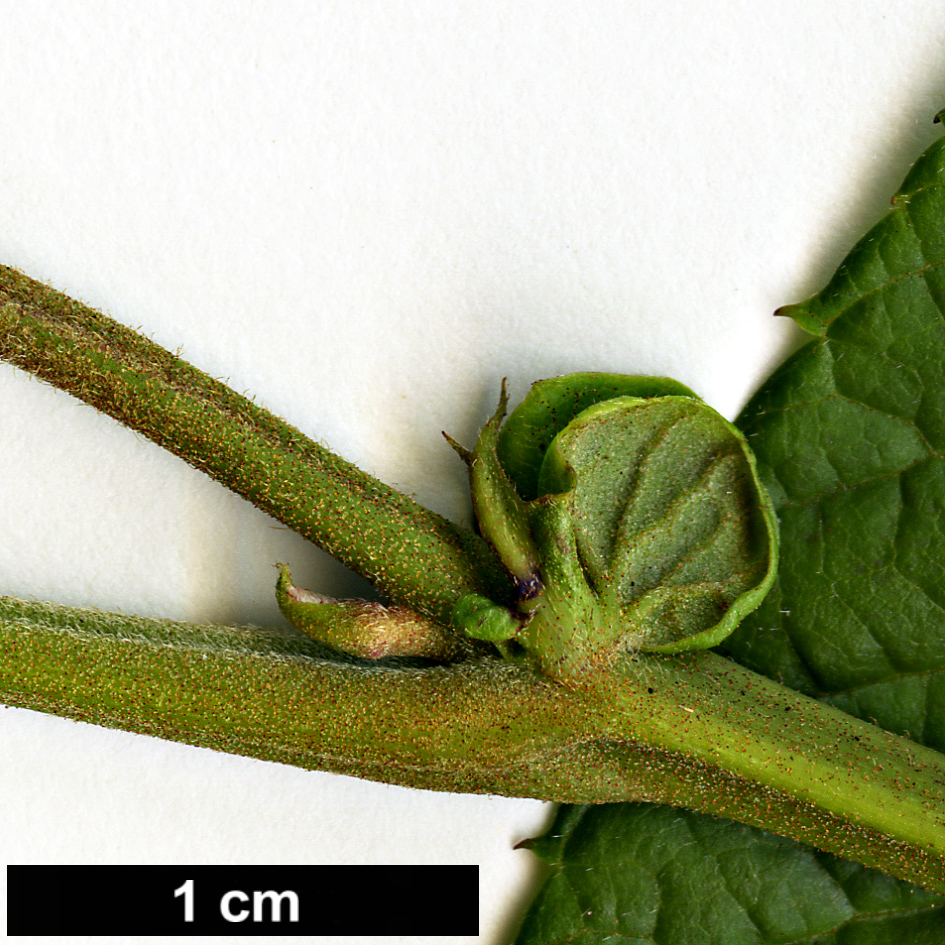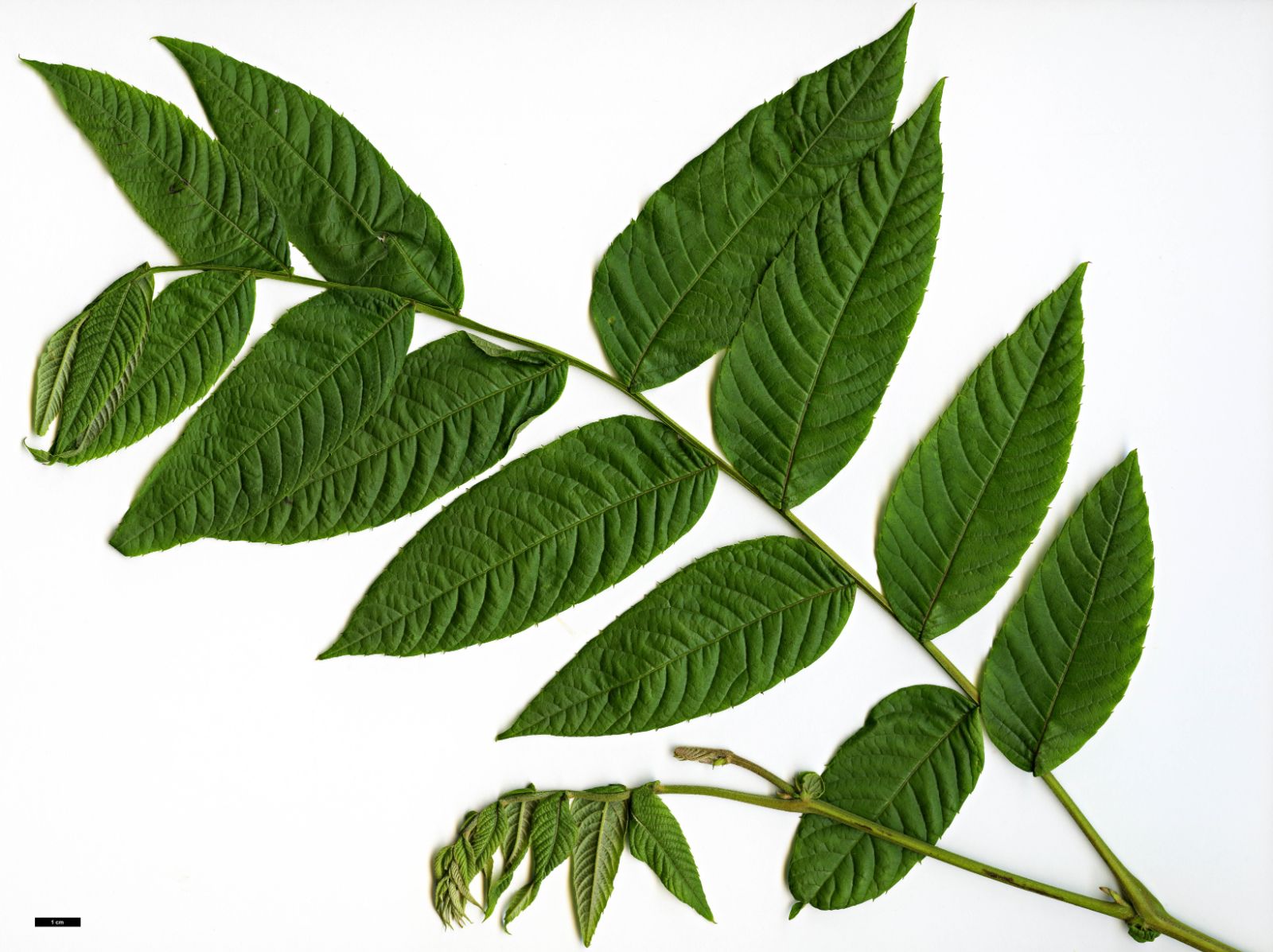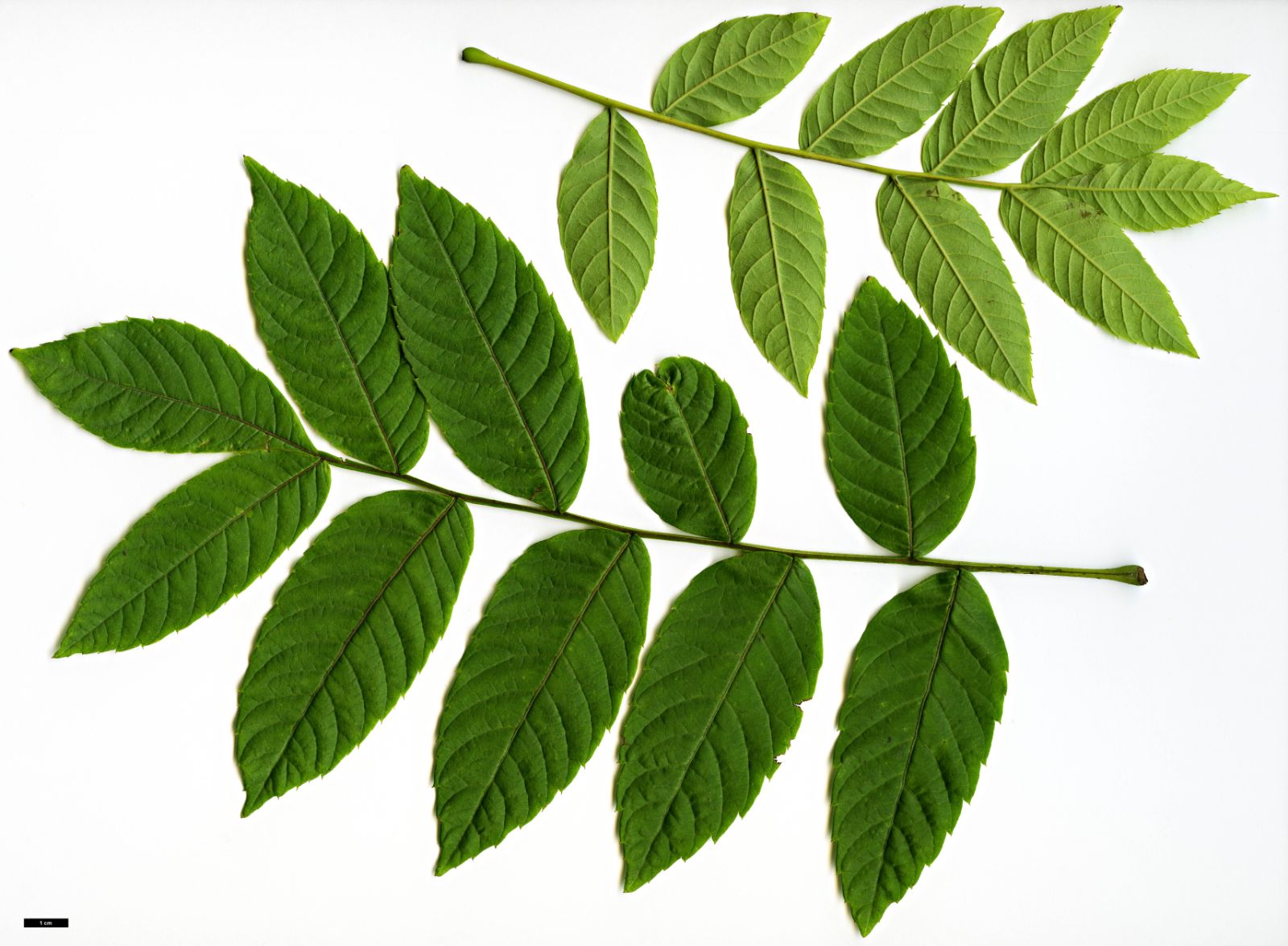Rhoiptelea
Sponsor
Kindly sponsored by
a member of the International Dendrology Society
Credits
Julian Sutton (2020)
Recommended citation
Sutton, J. (2020), 'Rhoiptelea' from the website Trees and Shrubs Online (treesandshrubsonline.
Family
- Juglandaceae
Common Names
- Horsetail Tree
The genus Rhoiptelea, which contains a single species of deciduous tree native to East Asia, was described as recently as 1932 by (primarily) the Austrian botanist Heinrich von Handel-Mazzetti, a specialist in the Chinese flora, from a pair of specimens collected in Guizhou two years earlier (Tsiang 6568 and 6709). The name derives from the Latin rhoicus (pertaining to a sumach, Rhus) and the Greek ptelea (an elm tree, Ulmus). The fruits are superficially elm-like, while at least one contemporary plant collector has mistaken a Vietnamese Rhus for Rhoiptelea (T. Hudson pers. comm. 2019).
Rhoiptelea was immediately placed in its own family, Rhoipteleaceae, although comparisons were made to both Ulmaceae and Juglandaceae (Handel-Mazzetti 1932). More recent reappraisal, supported by molecular data (for example Geng et al. 2019), places it in a broad sense within Juglandaceae, as a basal branch (APG 2019).
In flower or fruit – most of the year in a mature, wild specimen – it is unlikely to be mistaken for any other member of the family. The inflorescences are long, pendulous, compound catkins branched near the base, in the axils of the previous year’s leaves. The result is that many of these are clustered together at a branch tip, making a large, pendulous panicle resembling a horse’s tail. Flowering usually commences before leaf emergence (Sun et al. 2006), although Kozlowski et al. (2018) illustrate a wild tree in flower with expanded leaves.
Neither the fossil record nor molecular data are very clear about when the genus diverged from other Juglandaceae; this is likely to have been before the end of the Cretaceous (66 MYA), perhaps in North America (Kozlowski et al. 2018). It has been confined to East Asia at least since the climatic upheaval of the Pleistocene, and is currently restricted to southern China and northern Vietnam.



